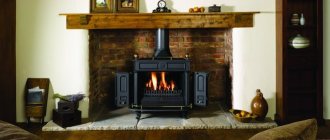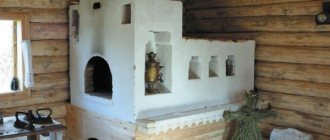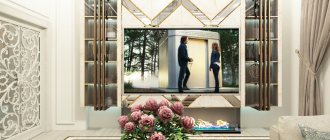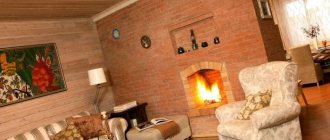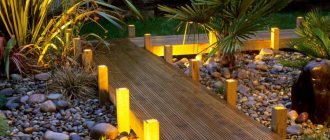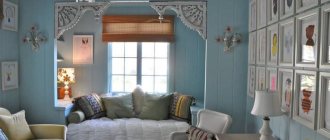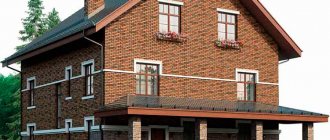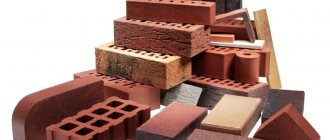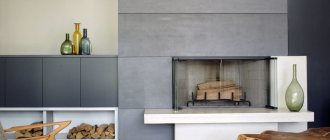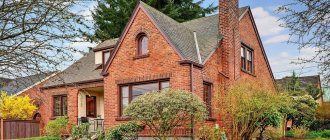Brick fireplaces are in particular demand among home owners. This design has not only decorative functions. The main advantage of such fireplaces is the ability to heat the room. In addition, a brick fireplace-stove is also used for cooking.
Advantages
Modern technologies keep pace with people's needs. It is for this reason that the long-known brick stoves have been replaced by new fireplace stoves. This design is a monoblock with a pipe channel and is installed on a single base. Moreover, each element has its own special meaning.
Conventional stoves have no decorative value, but you can cook with them. Fireplaces can please the eye and heat the room. But the fireplace-stove combines the functionality of both devices with an interesting design. It's like a fireplace with a stove - very convenient and functional. The main advantages of a brick stove-fireplace:
- The structure can warm up the air in the room quite quickly.
- The stove and fireplace can be used separately from each other. You can only cook or only heat the room - as you wish.
- Efficiency is about 80%.
- Ash pans with holes under each firebox make the cleaning process very simple and quick.
- When manufactured with high quality, a brick fireplace stove will serve for decades.
The structure can be installed in such a way that the stove will be localized in the kitchen space, and the fireplace in the living room. If a real master gets down to business, the fireplace stove turns into a real work of art and will decorate your home for many years. A brick fireplace stove would be a good choice for a country house. This will save on heating and electrical costs in general. This design can also be used as needed.
Preparatory work
Before you begin installing the future fireplace, you need to choose a place and clear it. There are several placement options: in the center of the room or in the corner.
Corner fireplaces do not take up much space, which is practically not used for other purposes. Correct placement in the interior is very important.
Additionally, corner fireplaces are more often used in small rooms, where placing a heater can create a very warm and cozy corner. After choosing a location, installation should begin. The first step is to lay the foundation for the future building - a concrete screed or slab. The brick structure has a decent weight, it is worth taking this into account before starting other work. When the preparation is completed, you can begin the design itself.
A noble brick fireplace with decorative elements made of dark wood in a Moscow country house.
A classic brick fireplace in the middle of the guest room for those who appreciate tradition.
Luxurious brick fireplace trimmed with expensive marble.
Options
There are quite a few variations of brick units. They differ in complexity and functionality. The most common types are: Swedish, Finnish, Russian and Dutch. There are also modified versions of stoves that are named after their creators.
There are ovens that do not have a hob at all. They represent a rudimentary wall structure with smoke exhaust channels, fireboxes, cleaning and blower chambers located between them. Such units are used for heating. Another option is a fireplace-stove with a heating and hob surface. Such stoves attract people with their versatility. They are more complex to design and install. Let's consider several interesting types of brick fireplaces and stoves:
With open firebox
Fireplaces with an open firebox allow you to warm up the air in the room in a fairly short time. If this design includes a hob, cooking is very easy. Owners of such fireplace-stoves can install barbecues right in the house and barbecue at any time of the year.
With air heating
Air-heated fireplaces are considered the best for heating a home. In such designs, a cast iron firebox is used. The duct system extends throughout the house and the casing in combination gives the desired result - complete heating. The system works in such a way that cold air is directed directly into the firebox, heats up and rises up through the pipes.
With water heating
Fireplaces with water circuits are gaining popularity. This design may include a heating and hob panel. A stove connected to heating has a great advantage over its counterparts - it pleases the eye, warms the whole house, and makes it possible to cook. Such designs are often used for baths.
As already mentioned, there are modification options. But knowing the basic models, you can easily choose the format that is convenient for you.
Each interior style has a corresponding fireplace
The interior of a country house will be complete if the design of the fireplace matches the style of the room where it is located. Otherwise, the situation will become eclectic, requiring a professional approach to harmonize it.
The fireplace, in keeping with the country style, is made of natural materials: wood, stone, brick with an expressive texture, and aged metal. Traditional options that look like country stoves or cast iron “potbelly stoves” are suitable. A good environment for a fireplace in a country interior would be massive ceiling beams, textured plaster, wrought iron decor, and hunting trophies.
Gas boiler in a decorative portal in a country interior
Double-sided fireplace in a rustic interior
Wood burning fireplace in a country living room
In a Mediterranean interior, a fireplace is usually installed in the central part of the room, which increases its resemblance to a fire. Wall location is acceptable. This fireplace looks natural and simple, but can be faced with patterned tiles.
Stone fireplace with carvings in a Mediterranean interior
An abundance of natural materials and a traditional fireplace go perfectly together
If a country house is decorated in a loft style, then a discreet bio-fireplace or a brutal “potbelly stove” fireplace will fit into the interior. High-tech or minimalism allows for laconic devices, in the design of which the emphasis is placed on non-trivial shapes or materials. It is preferable to have an island fireplace or install it in a partition inside the room. Materials such as fireproof glass or plastic or metal are welcome.
Fireplace with a metal portal in a high-tech interior
Loft fireplace
Fireplaces in the Art Nouveau or Art Nouveau style are strictly square or rectangular in shape with smoothed edges, but with textured and intricate decor. Polished portals with metal, glass elements and carvings are used. Such a fireplace becomes an exclusive decoration of a country house.
Art Nouveau fireplaces with characteristic natural motifs
Fireplaces in classical style interiors are characterized by symmetry and elegance. Portals are made of valuable wood, natural stone (marble, granite, onyx, malachite), decorated with columns and semi-columns. Large decorative elements on the mantelpiece are acceptable: clocks, figurines, mirrors, lamps.
Fireplace in a classic interior
The fireplace in the interior of a country house in the Baroque style is replete with decorative details: mosaics, carvings, gilding, carvings. Its design is even perceived as excessive. The traditional material for making a Baroque fireplace is white marble and other types of light stone.
Baroque fireplace
The design of the fireplace in modern, Scandinavian or eclectic interiors, which allow for a mixture of styles, can be anything. The main thing is to fit within the framework of good taste, consistently reflecting the chosen concept in all interior elements.
Fireplace in a modern interior
Fireplace in the Scandinavian interior of a country house
Stylistics
A well-chosen fireplace should be combined with the overall style of your interior. Only then will such an addition look beautiful. Fireplace stoves are often made independently or to order. The Finnish model is quite popular. Let's look at the most popular styles in which this unit is made:
Minimalism
Minimalism is characterized by strict forms and lines. In houses of this style, small fireplaces are installed, which serve a decorative and heating role. A laconic design with a minimum number of decorative parts is the perfect set. Any room in your home will become even more cozy when it has a mini fireplace.
A small fireplace stove will fit well into a minimalist interior and will delight you and your guests. In addition, this option is well suited for houses with a small area. Here you can also install a structure in which the stove will face the kitchen, and the fireplace itself will face the living room.
Classic
Fireplaces of this style were the first. They were installed by noble people as an interesting piece of furniture and a sign of their superiority. Such fireplace stoves always have the correct shape and only expensive finishing or carving.
Such units usually go flush with the wall. This arrangement determines the main decorative accent on the firebox itself. All designs of such furnaces include a U-shaped portal. But you can also choose a non-embedded option. In this case, the fireplace stove is located against the wall, and the chimney is covered with a stylized casing.
Modern
This type of fireplace stove is often chosen by young people. You can buy a lot of interesting options. Such units are often used as architectural details. These fireplaces are often installed so that they blend into the wall and resemble a window with a fire. An interesting option is when a double-sided fireplace stove is installed in the interior wall. With this arrangement, you can use the structure as a piece of furniture on one side, and on the other as a stove.
Rustic
These are country style fireplaces. This design will look good in a wooden house. Natural wood ceilings, harmoniously selected wall finishes and dark floors. Moreover, using wallpaper in this case is completely impractical. They will quickly become unusable due to the stove. A Russian stove works well. Carved decorative elements will add originality and exclusivity.
Venetian
Fireplace stoves of this style are quite massive and clearly stand out against the background of the wall. They are designed to show everyone around their power and sophistication in one person. In an interior of the appropriate style, such fireplaces look like a charming integral attribute.
Fireplace in the living room interior: varieties
Due to the popularity of this piece of furniture, today there are a considerable number of varieties. Models differ not only in their operating principle, but also in their size, style, shape, and finish. This allows you to choose the most optimal option in all respects. But at the same time, the selection process may be unnecessarily prolonged. Therefore, we suggest you understand the features of each fireplace and consider what you should pay attention to when choosing.
Wood burning fireplace
When it comes to a fireplace, people mostly think of the classic wood-burning design. It has been popular for many years and is ideal for a private home with a large living room. Such a fireplace creates a genuine atmosphere of warmth, warms even in the most severe frosts and often looks very beautiful. It has an incredibly strong calming effect. That’s why there are even entire broadcasts on the Internet with such a pleasant crackling sound and mesmerizing view of fire.
Of course, like any option, it has its drawbacks. This mainly concerns the rather complex process of installation and operation. This process should be trusted exclusively to highly specialized professionals. Because the risks in this case are really very high. In addition, it is very important to take care of a good, high-quality chimney and do regular inspections and cleanings. It is also necessary to allocate a special place for firewood, scoop and poker. As for the features of the room itself, its area must be at least 20 square meters and must have high ceilings. Otherwise, safety rules will be violated. Of course, installing a wood-burning fireplace is not an easy task, but perhaps this option is capable of creating the very atmosphere that everyone dreams of.
Gas fireplace
The main competitor of the previous option is considered to be a gas fireplace. It has a more modern, stylish look, so it will complement almost any interior well. It is noteworthy that it also warms in cold weather, but at the same time has the ability to regulate the temperature. It is very convenient in everyday life. In addition, there is no need to equip a firewood shed for it, since firewood is not used in this case. This will save a lot of space in your home. In general, we can say that the only difference between this option and the previous one is the need for a gas pipe. In terms of its functionality and appearance, a gas fireplace is an excellent solution for a cozy home.
Electric fireplace in the living room
Electric fireplaces have become popular recently. Undoubtedly, they cannot compete with the classic version. But on the other hand, this is an excellent solution for decorating city apartments. This type of fireplace is not designed for heating, so it does not emit much heat. At the same time, it serves as a real decoration for the living room and creates that unique atmosphere of warmth and comfort. The advantage of this option is its mobility. That is, if desired, you can always move it or move it to another room. In addition, it does not have an increased level of danger and does not leave ash and soot in the room.
It should be noted that the fireplace must ideally suit the overall design of the living room. The most suitable in this case would be high-tech and country styles. Often in such rooms a sofa is placed against the wall and a small table in front of the fireplace. You can use it for evening tea or leave a couple of your favorite books on it. The fireplace itself is decorated quite often, but only with small decorative details. For example, a figurine or a photograph in a beautiful frame. All this helps to create a pleasant homely atmosphere.
Biofireplace
Increasingly, in the interior of the living room you can see a bio-fireplace, which provides a live fire. It operates in a vacuum on plant-based, environmentally friendly biological fuel – bioethanol. This type of raw material does not emit any harmful substances when burned and is generally considered safe. It is noteworthy that this design does not require a chimney or special ventilation. Thanks to this, the fireplace is ergonomic, mobile and at the same time quite practical and durable. Most often it is installed in a living room in a high-tech or minimalist style. But other options are acceptable based on personal preferences.
False fireplace in the living room interior
The most budget-friendly and safest option, which is suitable even for a small apartment, is a false fireplace. Of course, it does not have a warming effect, but is purely decorative. Foam plastic, chipboard, wood or brick are mainly used as the basis for this design. For exterior design, you should choose the material based on the style of the living room interior. Most often this is wallpaper, decorative panels, paint and much more. In addition, it is necessary to create an imitation of fire. To do this, you can use candles of different sizes and shapes. The garland along with logs also looks very beautiful. Often a false fireplace is decorated in a completely different way, namely with the help of flowers in vases and other decorative items. It looks fresh, stylish and always attracts the attention of guests.
There are also types of fireplaces depending on the type of firebox:
- open. The flame in such structures is not fenced off and due to this, the efficiency does not exceed 15%. It turns out that the main energy consumption goes into the pipe. In general, we can say that these types of fireplaces should not be considered heating devices, since they serve more of a decorative role.
- closed. In this case, the firebox is closed with special doors made of heat-resistant glass. The flame is clearly visible through it, which allows you to enjoy the process on cozy family evenings. It is noteworthy that in many models these doors open and thus the fireplace is transformed into an open view. The efficiency is approximately 75%.
There are also several types of fireplaces depending on their location. It is always better to decide on this nuance in advance in order to save time on choosing. In addition, this will help to think more carefully about the interior design of the living room.
Wall fireplace
The main feature of this design is that it is installed right next to one of the walls of the living room. However, keep in mind that this design gives off heat, so it will go directly towards this wall. Equipment and fabric products should not be placed on it.
Corner fireplace in the living room interior
Perhaps the most convenient to use is a corner fireplace. This design does not take up much space and is well suited to any style of living room. The only caveat is that it should be installed near the internal walls. Thanks to this approach, the heat from the fireplace will spread to the next two or three rooms. However, experts note that such an installation slightly affects its functionality. Because the room may not warm up evenly, especially if it is large.
Island fireplace
One of the most stylish options for the interior can rightfully be called an island fireplace, which has the highest heat output. It is installed in the center of the living room, thanks to which it warms the room well. By the way, this option is often used for zoning space. This is especially true in cases where the living room is combined with a kitchen or dining room.
Built-in fireplace
For owners of small homes, it is best to take a closer look at built-in fireplace models. The fact is that they are particularly compact. In addition, they are installed mainly in a column or niche, thanks to which a lot of free space can be saved.
Regardless of the type of fireplace chosen, experts recommend following several general rules:
- It is best to insulate the entire room, including windows and doors, which will significantly reduce heat consumption.
- A fireplace that provides warmth should only be installed near the interior walls of the house. Otherwise, most of the heat will be directed to heating the street.
- If you plan to install a wood-burning fireplace, then the appropriate calculations must be made at the stage of building the house. Since it assumes the presence of a chimney, a strong floor and even some foundation features.
- When choosing a fireplace, it is extremely important to consider the dimensions of the room. For a small living room, a corner or built-in model is suitable. In turn, for more spacious rooms the ideal solution would be an island or wall-mounted fireplace.
- The fireplace must be installed exclusively in accordance with fire safety regulations.
Principle of operation
Any stove has three main components: firebox, pipe, chimney. The main part is the firebox. This is where the wood burns. There is a hole at the bottom. Through it, air enters the firebox, which is necessary for combustion. This hole is covered with a special grill, so the firewood does not fall out. Air gets inside the firebox, and ash and other combustion products fall from the firebox into the hole.
There is a special door that allows you to put firewood into the firebox. And the firebox itself is closed on all sides. Just above the firebox is the hob. It is heated by fire and allows you to cook food. Oven ovens work the same way.
The ash pan chamber is located under the firebox. It also has a door to allow the chamber to be cleaned. The door is also able to regulate the amount of air that enters the firebox. In the arch of the firebox there is another hole - hailo. It is through it that hot air comes out, which heats the oven.
The pipes are designed to remove combustion products from the furnace. There are two types:
- Mounted. Installed on the stove.
- Indigenous. They may have their own foundation or be located inside a wall.
The most important feature that distinguishes a stove from a fireplace is that in the second option you can freely observe the fire. To prevent heat from escaping into the pipe, a heat shield is installed. In the combined version, the stove-fireplace has all the advantages of a stove and allows you to observe the flame.
Materials
The variety of available materials for making brick fireplaces and stoves is quite limited, but it allows you to create unique products. The units can be constructed from both ordinary bricks and figured bricks. When choosing a brick, its strength grade plays a big role.
Fireclay bricks (less commonly, quartz bricks) are used quite often because they are not sensitive to high temperatures. They lay out the area near the firebox. Heat resistant material is a must. Figured brick is relevant if you do not plan to decorate the fireplace stove. If any decorative work is planned, the external data of the masonry itself does not matter.
Clinker brick is one of the varieties of quartz. But in its production, slightly modified technologies are used. It is not used so often for two reasons: the material is quite expensive and heavy. But if your stove is large, then such a brick is perfect for building a foundation.
In order for the appearance of the structure to please the eye, you need to be guided by certain requirements when laying out the facing layer. The brick should be fairly solid and have good heat transfer. Paint will help create a unique look for your fireplace stove.
Tools and accessories
Making a fireplace stove requires certain accessories. The most necessary:
- Kiln brick.
- Heat-resistant clay mixture.
- Door with heat-resistant glass.
- Cast iron firebox door.
- Iron door for chimney and ash pan.
- Furnace grates.
- Surface for cooking. A cast iron stove should have the number of burners you need.
- Corners and corner shelf. As a rule, they are made of steel.
- Steel sheet up to 3 mm. Asbestos or basalt sheets for thermal insulation.
- Pipe and parts for connecting the chimney opening.
- Rolls and boards of waterproofing.
- Mixtures of concrete and soil.
- Bags of crushed stone and sand.
- Ceramic granite or tiles.
You need to choose materials very carefully. The strength and durability of the fireplace stove depends on their quality.
Ready-made order schemes
- A corner brick fireplace is usually installed in a small living room or bedroom, because it saves space while heating it effectively. The layout of such a fireplace is shown in the figure. The dimensions of the fireplace are 1x1 meter. The outer walls are made of red ceramic bricks (2 hundred pieces), the firebox is made of refractory bricks (1 hundred pieces). In addition, you will need clay and sand, cement, and concrete for the foundation.
Step-by-step diagram for arranging a brick fireplace - photo
- The simplest brick fireplace design for beginner stove-makers is a real salvation, because to install this fireplace you will not need a lot of material, and it can heat a fairly large room - up to 35 square meters. The overall dimensions of such a fireplace are 65x115 cm, the number of ceramic bricks is about 250 pieces, fireclay bricks will need about 100 pieces. Also prepare two bags of oven clay, three or four bags of dry sand, and some cement. You will also need a pipe damper and a steel angle for the firebox arch. The arrangement of a brick fireplace “for beginners” is shown in the figure.
A simple scheme for laying out a brick fireplace
- A large living room in a classic style requires a solid English fireplace. To build such a hearth, you need experience working with brickwork and strict adherence to the diagram.
Necessary materials:
- red ceramic brick – 300 pieces;
- fireclay bricks – 130 pieces;
- oven clay or fire-resistant masonry mixture - a couple of bags;
- quarry sand – 4 bags;
- cement – 1 bag;
- metal corner and steel strip - 3 pieces of 1 meter each;
- stove door for cleaning the chimney;
- stove damper.
The diagram of a brick fireplace in the English style and its dimensions are shown in the figure.
Scheme of an English brick fireplace with a straight chimney - photo
The general techniques for laying fireplaces are very similar, so the article discusses the most complex option - an English brick fireplace with an oblique hood. You can learn how to build a corner fireplace made of bricks from the article about corner fireplaces, and laying a simple fireplace for beginners should not cause difficulties if you carefully study our recommendations.
Requirements for the fireplace foundation
The stability of the fireplace depends not only on the masonry, but also on the reliability of its base. The foundation for the fireplace must be poured separately from the foundation of the building, otherwise damage to the hearth and chimney may occur due to seasonal soil shifts. If the fireplace is installed against a load-bearing wall, a compensation cushion of sand is made between the strip foundation of the house and the base of the fireplace - it is poured between the foundations and spilled with water.
The height of the base under the fireplace should be such that the first row of masonry is at the level of the finished floor. The foundation pit can be shallow, but on heaving soils a sand and gravel cushion with a thickness of at least 0.5 meters must be made. A layer of sand and gravel compensates for soil shifts and prevents the capillary rise of water from it, which ensures waterproofing of the foundation itself and the walls of the fireplace.
The foundation is poured from M150-M300 concrete with mandatory reinforcement. The formwork is made from boards or plywood, fastening the panels with self-tapping screws. The size of the foundation to be poured must exceed the dimensions of the fireplace on each side by 10 cm. Drawings of brick fireplaces, as a rule, contain the required dimensions, and you can safely use them when pouring the foundation.
After pouring the foundation, the concrete should be kept until it reaches critical strength for about 5-7 days, after which you can begin marking and laying the fireplace, having previously laid a double layer of additional waterproofing - roofing felt.
Masonry technology
Before you line the fireplace-stove with bricks, you need to draw up a diagram. It reflects all the necessary elements in the right places. Construction takes place in several stages:
- Base. We dig a pit and fill the bottom with crushed stone. The formwork is constructed using planed boards, and the pit itself is filled with cement.
- After 3-5 days the work continues. The brickwork is covered with roofing felt. Now the bottom row of bricks is laid out.
- Next, drawings play a big role. In agreement with them, the remaining bricks are laid out and the casting is installed. In order for the brick to have better contact with the mixture, it is soaked in water. The order is of great importance. Stick to it and you won’t have to redo the work. The inner sides of the furnace are smoothed during the process so that combustion products do not subsequently settle there.
- Now the chimney. It is important to remember fire safety measures here.
- The fireplace stove should dry naturally. This takes literally a few weeks.
- During the period of active drying, the oven is heated. Do this until all seams are the same color.
A fireplace is not only a key accent in the interior
Traditional types of fireplaces, which have not been the most common in recent years, are problematic to “dissolve” in the interior of a country house. With more compact devices with a sleek design, this is possible. Electric, bio- and gas fireplaces become an interior element that does not stand out from others. Embedding it in a niche or designing a portal to match the walls will help smooth out the external expressiveness of the fireplace.
What's the point in making a fireplace less noticeable? If the interior of a country house is designed independently, it is not easy to harmoniously fit a bright accent in the form of a fireplace into the surrounding environment without overloading it or making it old-fashioned. There is also a risk that in a couple of years you will want to radically change the design of your home, and an elaborate fireplace will deprive the owners of flexibility.
Laconic fireplace in the interior
Types of chimneys
The chimney acts as a channel system and is located inside the brickwork. The dimensions of the chimney directly depend on the dimensions of the fireplace stove. There are several types of chimneys:
- The simplest chimneys consist of certain sections that combine direct and return air flow. This design ends with a pipe. Return current areas are constructed from parallel channels. This is done in order to increase efficiency and improve air heating.
- Multi-turn chimneys. They differ from the previous ones only in the number of alternations of sections. The walls are heated more evenly because of this.
- Chimney without ducts. In such designs, everything is focused on the camera. Gases from the heil tend to the roof of the chamber, where they cool and descend back. The vapors give off their heat to the walls of the hood chamber. Exhaust gases exit into the pipe through openings at the bottom and side.
Any type can be used. It all depends on your needs.
Tips for use
Experienced stove makers can give useful advice on both the construction process and the operation of the fireplace stove. Do not use coniferous firewood, otherwise the chimney will become dirty and stop functioning. Firewood should always be well dried, this is important for long burning. Under no circumstances burn household waste and various types of waste paper - toxins will be released into the air.
A sauna stove must meet many criteria. Reviews show that it is better to pay attention to Finnish manufacturers. Every part of their product comes with a warranty, making repairs easy. A fireplace screen should be quite reliable.
When constructing with your own hands, always use the diagrams. They will help you understand exactly how the components should be placed in each line. Be sure to use a building level during this process. Corner and front structures are the most popular. But this depends on the overall layout of the house.
